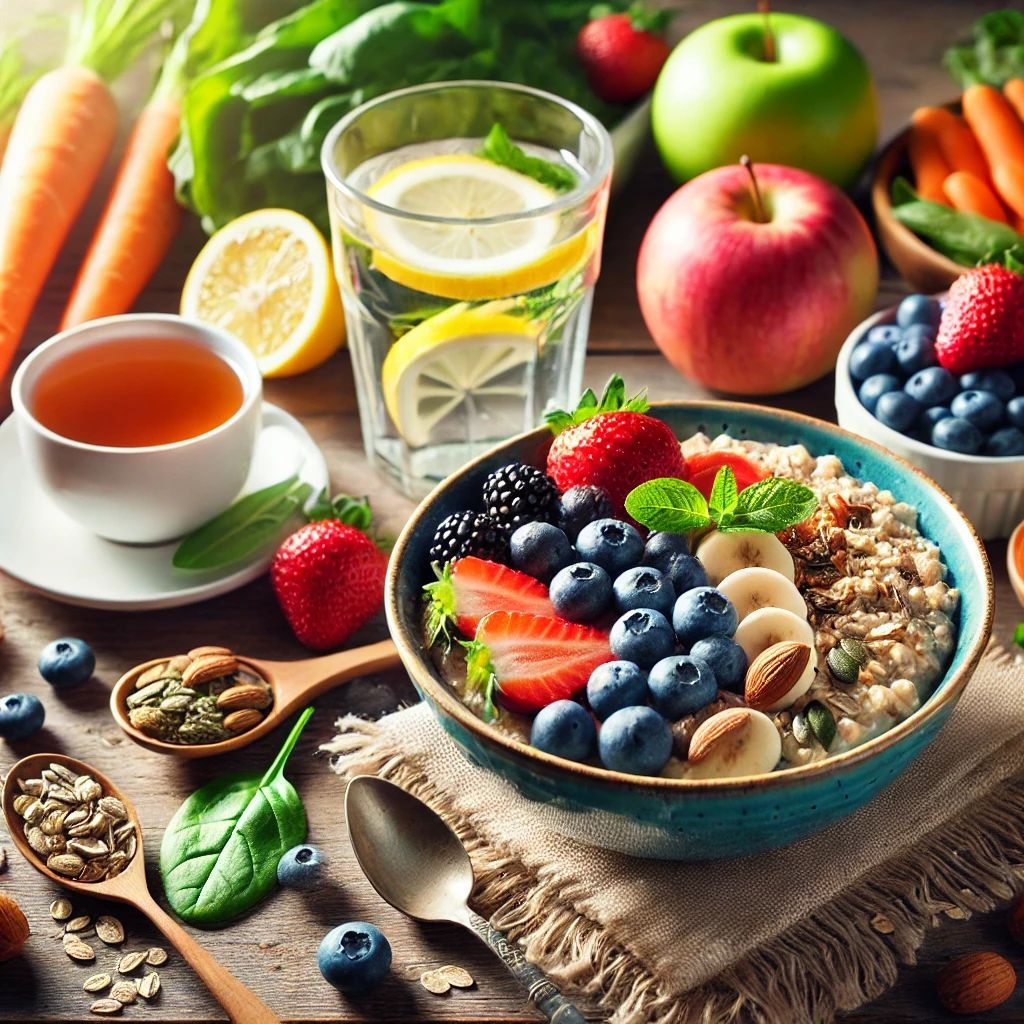Manuka honey - today's natural antibiotic
Tanja Begerack • 17. November 2020
Manuka honey
- The special natural remedy from New Zealand
Manuka honey is produced by honey bees on site from the nectar of the South Seas myrtle, which is a New Zealand species of the tea tree. The indigenous people (Maori) there have been using the bark, leaves, and honey of the Manuka tree for centuries. It has been traditionally used to treat wounds, inflammation, skin conditions, and as a natural disinfectant. The plant and especially the honey extracted from its nectar are known to have strong antibacterial, antiviral, and antifungal effects.
Scientific findings:
Researchers at the University of Dresden have studied the effects of New Zealand honey. They have found that unlike many other types of honey, Manuka honey contains particularly high levels of the substance methylglyoxal, or MGO, which is said to have anti-inflammatory and antibacterial properties.
Standard types of honey also contain the health-promoting MGO, but in much lower concentrations. While "normal" types of honey contain only about five milligrams of MGO per kilogram of honey, Manuka honey contains up to 700 milligrams.
Application and Effectiveness:
Scientific findings:
Researchers at the University of Dresden have studied the effects of New Zealand honey. They have found that unlike many other types of honey, Manuka honey contains particularly high levels of the substance methylglyoxal, or MGO, which is said to have anti-inflammatory and antibacterial properties.
Standard types of honey also contain the health-promoting MGO, but in much lower concentrations. While "normal" types of honey contain only about five milligrams of MGO per kilogram of honey, Manuka honey contains up to 700 milligrams.
Manuka honey is particularly popular for its antibacterial effect and is often taken to treat colds, flu, and to strengthen the immune system. Due to its anti-inflammatory and wound-healing properties, it is also used for throat and tonsil inflammation (Manuka Health - MGO 400+ lozenges), as well as for acne, eczema, and psoriasis. A small amount of honey is applied to affected areas. It also shows its effectiveness in treating gastrointestinal complaints. Regular consumption additionally strengthens the intestinal flora. The miraculous honey is also said to possibly have a preventive effect against periodontitis and tooth decay. Regular intake is said to improve dental health. It is also used for minor burns and foot fungus infections.
Quality:
When buying Manuka honey, it's important to make sure that you're getting the real deal. You can recognize it by the Methyglyoxal (MGO) or Unique Manuka Factor (UMF) rating, which must always be stated on the packaging.
It should have a minimum of 100 MGO or 10 UMF. An MGO of 100 means that the honey contains at least 100 milligrams of Methylglyoxal per 1 kilogram. The higher the rating, the better the quality. A rating of over 400 is considered to be excellent quality.
Disclaimer for Posts on Manuka Honey:
Please note that the information shared on this blog about Manuka honey and its health effects is of a general nature and is not intended to substitute for professional medical advice, diagnoses, or treatments. The effects of Manuka honey can vary individually, and what may be beneficial for one person may not apply to another. It is recommended to consult a qualified healthcare provider for specific health concerns or questions regarding the use of Manuka honey.
The information on this blog is based on current scientific knowledge and studies at the time of publication. However, science is constantly evolving, and new research findings may lead to new insights. Therefore, both the author and the operator of this blog assume no responsibility for the currency, accuracy, completeness, or quality of the information provided.
All statements and views expressed here are for educational purposes only and are intended to encourage readers to think more consciously about the use of Manuka honey and health. We encourage all readers to make health-related decisions in consultation with medical professionals.
By using this blog, you acknowledge that you take responsibility for your own health and well-being and that both the author and the operator of this blog assume no liability for any disadvantages that may arise from the application of the information shared here on Manuka honey.
When buying Manuka honey, it's important to make sure that you're getting the real deal. You can recognize it by the Methyglyoxal (MGO) or Unique Manuka Factor (UMF) rating, which must always be stated on the packaging.
It should have a minimum of 100 MGO or 10 UMF. An MGO of 100 means that the honey contains at least 100 milligrams of Methylglyoxal per 1 kilogram. The higher the rating, the better the quality. A rating of over 400 is considered to be excellent quality.
Disclaimer for Posts on Manuka Honey:
Please note that the information shared on this blog about Manuka honey and its health effects is of a general nature and is not intended to substitute for professional medical advice, diagnoses, or treatments. The effects of Manuka honey can vary individually, and what may be beneficial for one person may not apply to another. It is recommended to consult a qualified healthcare provider for specific health concerns or questions regarding the use of Manuka honey.
The information on this blog is based on current scientific knowledge and studies at the time of publication. However, science is constantly evolving, and new research findings may lead to new insights. Therefore, both the author and the operator of this blog assume no responsibility for the currency, accuracy, completeness, or quality of the information provided.
All statements and views expressed here are for educational purposes only and are intended to encourage readers to think more consciously about the use of Manuka honey and health. We encourage all readers to make health-related decisions in consultation with medical professionals.
By using this blog, you acknowledge that you take responsibility for your own health and well-being and that both the author and the operator of this blog assume no liability for any disadvantages that may arise from the application of the information shared here on Manuka honey.

Discover how small dietary changes can lead to greater energy and well-being. This blog post explains how healthy eating is easy to incorporate into everyday life and why it has a positive impact on both body and mind over the long term.
balanced nutrition, breakfast ideas, mental strength, oatmeal with fruits, nutrient-rich meals, healthy eating tips, boost well-being, healthy lifestyle, nutrition advice, energy boost, simple recipes, healthy breakfast, healthy living

In this insightful post, we explore the spiritual meaning of dreams and their role in our consciousness. Discover how dreams serve as a bridge between our subconscious and the spiritual realm, and learn practical tips for interpreting dreams and enhancing dream recall to deepen your spiritual journey.

Recently, I stumbled upon the impressive health benefits of millet, a grain that is often overlooked in our modern diet. This discovery inspired me to delve deeper into millet and its numerous positive impacts on our health. What I found is truly fascinating and deserves to be shared with you. Millet stands out among grains thanks to its rich composition of essential nutrients: B-complex vitamins, vitamin C, beta-carotene, and a wealth of minerals and trace elements, making it an excellent source of iron, especially for vegetarians and vegans. The Nutrient Powerhouses in Millet The various types of millet offer a remarkable density of minerals such as fluorine, potassium, magnesium, phosphorus, and sulfur. Notably, it has a high content of silicon (silicic acid), iron, and vitamin B6, setting millet apart from other grains. This abundance of nutrients not only makes millet easily digestible and tolerable but also a strong ally in combating stomach and intestinal problems, gallstones, and in strengthening the immune system. Its anti-inflammatory, detoxifying, and overall strengthening properties make it a valuable component of a healthy diet. Millet and Its Beauty Secrets It's no longer a secret that millet contributes to the beauty of the skin, hair, and nails. The Karlsruhe Skin Clinic has even shown that millet extract can promote the growth phase of hair, making it a valuable aid in the fight against hereditary hair loss. Versatility and Tradition Millet, one of the world's oldest gluten-free foods, was once a main food source in Europe before being gradually displaced by potatoes and maize in the 17th century. Today, we're rediscovering its versatility and its role as an ancient medicinal plant in traditional folk medicine. Caution with Millet Consumption Despite its many benefits, millet contains dhurrin, which can release cyanide and could interfere with iodine metabolism. Therefore, it is advisable, especially for those with hypothyroidism, to discuss millet consumption with a doctor. However, the rapeseed millet cultivated in Europe contains significantly less dhurrin, especially the yellowish varieties like golden millet. The Many Faces of Millet Millet comes in numerous varieties, each with its own unique benefits. The differences range from color and taste to specific health benefits. However, all are gluten-free and offer a rich palette of nutrients. Conclusion The rediscovery of millet as a super grain and its diverse health benefits show how valuable the wisdom of ancient cultures can be for our modern world. Millet definitely deserves a fixed place in our diet - not only for its nutrients but also as a source of strength for beauty and health. I hope these insights into the world of millet inspire you to integrate this versatile and healthy grain into your diet. Discover the ancient wisdom and the modern health benefits millet has to offer. Disclaimer for Posts on Millet and Its Effects: Please note that the information shared on this blog about millet and its health effects is of a general nature and is not intended to substitute for professional medical advice, diagnoses, or treatments. The effects of millet can vary individually, and what may be beneficial for one person may not apply to another. It is recommended to consult a qualified healthcare provider for specific health concerns or questions regarding the use of millet. The information on this blog is based on the current scientific knowledge and studies at the time of publication. However, science is always advancing, and new research may lead to new insights. Therefore, both the author and the operator of this blog assume no responsibility for the currency, accuracy, completeness, or quality of the information provided. All statements and views expressed here are solely for educational purposes and are intended to encourage readers to think more consciously about the use of millet and health. We encourage all readers to make health-related decisions in consultation with medical professionals. By using this blog, you acknowledge that you take responsibility for your own health and well-being and that both the author and the operator of this blog assume no liability for any disadvantages that may arise from the application of the information shared here about millet.





